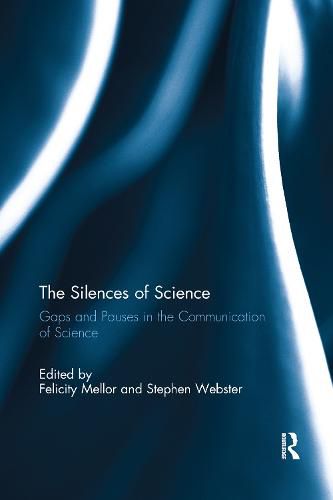Readings Newsletter
Become a Readings Member to make your shopping experience even easier.
Sign in or sign up for free!
You’re not far away from qualifying for FREE standard shipping within Australia
You’ve qualified for FREE standard shipping within Australia
The cart is loading…






Over the last half century scholars from a range of disciplines have attempted to theorise silence. Naively we tend to think of silence negatively, as a lack, an emptiness. Yet silence studies shows that silence is more than mere absence. All speech incorporates silence, not only in the gaps between words or the pauses that facilitate turn taking, but in the omissions that result from the necessary selectivity of communicative acts. Thus silence is significant in and of itself; it is a sign that has socially-constructed (albeit context -dependent and ambiguous) meanings.
To date, studies of science communication have focussed on what is said rather than what is not said. They have highlighted the content of communication rather than its form, and have largely ignored the gaps, pauses and lacunae that are an essential, and meaningful, part of any communicative act. Both the sociology of science and the history of science have also failed to highlight the varied functions of silence in the practice of science, despite interests in tacit knowledge and cultures of secrecy. Through a range of case studies from historical and contemporary situations, this volume draws attention to the significance of silence, its different qualities and uses, and the nature, function and meaning of silence for science and technology studies.
$9.00 standard shipping within Australia
FREE standard shipping within Australia for orders over $100.00
Express & International shipping calculated at checkout
Over the last half century scholars from a range of disciplines have attempted to theorise silence. Naively we tend to think of silence negatively, as a lack, an emptiness. Yet silence studies shows that silence is more than mere absence. All speech incorporates silence, not only in the gaps between words or the pauses that facilitate turn taking, but in the omissions that result from the necessary selectivity of communicative acts. Thus silence is significant in and of itself; it is a sign that has socially-constructed (albeit context -dependent and ambiguous) meanings.
To date, studies of science communication have focussed on what is said rather than what is not said. They have highlighted the content of communication rather than its form, and have largely ignored the gaps, pauses and lacunae that are an essential, and meaningful, part of any communicative act. Both the sociology of science and the history of science have also failed to highlight the varied functions of silence in the practice of science, despite interests in tacit knowledge and cultures of secrecy. Through a range of case studies from historical and contemporary situations, this volume draws attention to the significance of silence, its different qualities and uses, and the nature, function and meaning of silence for science and technology studies.